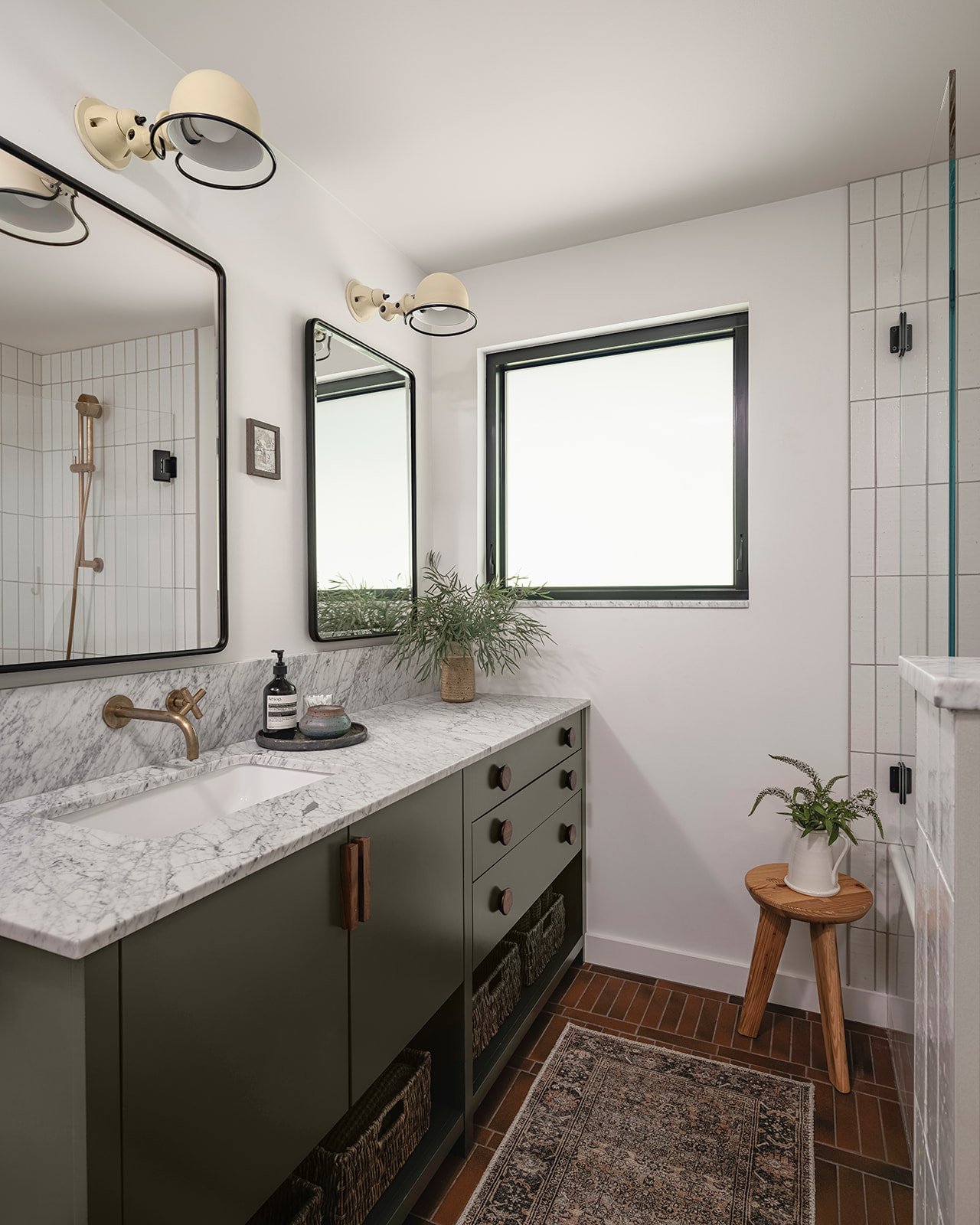Cost considerations when remodeling bathrooms.
“Some people look for a beautiful place, others make a place beautiful.” –Unknown
When kicking off a new design project we are frequently asked, “What do you think this is going to cost?” The short answer to that very broad question is always: it depends!
In general, we can break project costs down into six overarching categories:
Design
Materials
Labor & Project Management
Permitting
Contingency
Below we’ll try and break these categories down a bit further in specific relation to bathroom remodels.
1. DESIGN
When considering the overall cost of a project, hiring a designer may feel like a superfluous expense, but as a wise builder once told us, “Have a plan, save a hundred grand.” (Thanks Tad, that one’s a keeper!)
There have been countless occasions when we’ve been pulled in to consult on a job mid-construction, only to realize a lack of advanced planning and coordination had set the stage for significant errors, delays, and client frustration. Bottom line: investing in professional help can save you money in the long run by avoiding costly mistakes.
2. MATERIALS
When we’re talking bathrooms, even the simplest space will require upwards of 50 unique product and material specifications. We outlined the complete material list for this relatively small bathroom to give you a sense for how many selections had to be made in order to price and execute this renovation. Depending on the size of your space, the quality of your selections, and the overall project scope, materials can account for 50% or more of your overall project budget.
General carpentry (lumber, drywall, fasteners, etc)
Plumbing rough-in valves
Electrical rough-in materials
Electric heated floor mat
Door & door hardware
Window & window hardware
Floor tile & grout
Floor stone threshold
Wall tile, grout, and trims
Toilet & toilet hardware
Bathtub insert
Tub filler, hand shower, hand shower mount, drain, overflow
Tub glazing
Tub glazing hardware (hinges, brackets, knob)
Vanity cabinet
Vanity hardware (knobs, pulls)
Stone countertop and miscellaneous trims (backsplash, window sill, niche trim, pony wall cap)
Sink and pop-up drain cover
Faucet tapware
Medicine cabinet/mirrors
Lighting (wall sconces, recessed cans)
Ventilation fan
Thermostat
Electrical outlet & light switch style and trims
Baseboard millwork
Primer & paint
Robe hooks
Towel bars
TP holder
Accessories, art, rug, linens
3. LABOR & PROJECT MANAGEMENT
Labor will be the second significant cost bucket you can anticipate. Whether you are working direct with skilled trades, or using a general contractor to execute your project, labor will generally account for half or more of your budget depending on the complexities noted previously.
We lump project management in with labor because there are a few different ways this gets handled. If you’re working with a general contractor, they will take on the lion’s-share of project management once construction commences. They will schedule trades, sequence work, and ensure compliance with the design intent. If a designer is involved, the designer will typically review and approve installed work and help troubleshoot unforeseen issues that arise in the field.
For the mid-scale bathroom remodel documented in this post, the owner kept the labor costs low by acting as their own project manager. This required a significant amount of time, attention, and coordination on their part, but reduced overall costs. See how the material/labor costs compare in the project budget summary.
4. PERMITTING
If you’re moving structure, adding plumbing, changing use, or building an addition, chances are your local building department will require a construction permit. Construction permitting fees vary based on location and project size. Permit submittals generally require drawings that describe the work and ensure code compliance, and this documentation also has an associated cost.
5. CONTINGENCY
It’s always wise to plan for the unexpected, so we suggest that clients set aside a contingency of around 10-20% of your total project budget for discoveries in the field such as mold, outdated wiring, or plumbing surprises. A little contingency cushion can help you navigate unforeseen challenges without totally derailing your project.
The “before” condition at our Richmond Beach rambler project.




